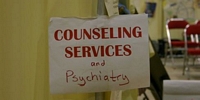|
|
 Acne (1,500) Acne (1,500)
 Addictions (1,500) Addictions (1,500)
 Advice (1,500) Advice (1,500)
 Allergies (1,092) Allergies (1,092)
 Alternative Medicine (1,500) Alternative Medicine (1,500)
 Anti Aging (1,500) Anti Aging (1,500)
 Breakup (1,500) Breakup (1,500)
 Cancer (1,499) Cancer (1,499)
 Dental Care (1,500) Dental Care (1,500)
 Disabilities (1,500) Disabilities (1,500)
 Divorce (1,500) Divorce (1,500)
 Elderly Care (1,498) Elderly Care (1,498)
 Goal Setting (1,500) Goal Setting (1,500)
 Hair Loss (1,500) Hair Loss (1,500)
 Health and Safety (1,497) Health and Safety (1,497)
 Hearing (1,500) Hearing (1,500)
 Law of Attraction (1,499) Law of Attraction (1,499)
 Marriage (1,500) Marriage (1,500)
 Medicine (1,497) Medicine (1,497)
 Meditation (1,499) Meditation (1,499)
 Men's Health (1,500) Men's Health (1,500)
 Mental Health (1,500) Mental Health (1,500)
 Motivational (1,500) Motivational (1,500)
 Nutrition (1,495) Nutrition (1,495)
 Personal Injury (1,499) Personal Injury (1,499)
 Plastic Surgeries (1,500) Plastic Surgeries (1,500)
 Pregnancy (1,496) Pregnancy (1,496)
 Psychology (1,500) Psychology (1,500)
 Public Speaking (1,500) Public Speaking (1,500)
 Quit Smoking (1,500) Quit Smoking (1,500)
 Religion (1,499) Religion (1,499)
 Self Help (1,500) Self Help (1,500)
 Skin Care (1,500) Skin Care (1,500)
 Sleep (1,500) Sleep (1,500)
 Stress Management (1,500) Stress Management (1,500)
 Teenagers (1,492) Teenagers (1,492)
 Time Management (1,500) Time Management (1,500)
 Weddings (1,500) Weddings (1,500)
 Wellness (1,500) Wellness (1,500)
 Women's Health (1,500) Women's Health (1,500)
 Women's Issues (1,500) Women's Issues (1,500)
|
Even as President Obama works to revolutionize the American system of healthcare, there’s a crisis that will be faced by a substantial number of our senior citizens: paying for their long-term housing needs.
According to the Department of Health & Human Service’s Administration on Aging, the older population in this country—those 65 years of age or older—numbered slightly more than 37 million in 2007, the most recent year for which data are available. Alarmingly, the number of us ages 45 to 64 who will reach 65 or older during the next two decades, will increase by 39 percent, and by nearly 150 percent between 2000 and 2050.
These are the Baby Boomers, the largest generation in U. S. history, more than 73 million in number. Their impact on the country’s financial, economic and social institutions has been unprecedented. Now, as the oldest Boomers begin to turn 65, many wonder whether their sheer size will overwhelm the Social Security system. It is much more likely that the inevitable declines in Boomers’ health during this period will overwhelm their ability to pay for their housing in various types of care facilities.
Currently, many members of this generation are finding themselves increasingly responsible for their own aging parents’ needs, anticipating that Medicare or another governmental agency will fund the eventual expense of nursing home , assisted living , or similar facilities as increasing levels of care become necessary.
The fact is, however, that the burden of paying for such specialized senior housing falls almost exclusively upon individuals. Moreover, the current housing meltdown complicates the ability of needy seniors to realize the proceeds they require from the sale of their housing to pay the costs of this senior-oriented housing. And indeed, the Baby Boomers themselves have been rocked by the twin tsunamis of the housing crisis and the economic chaos that has battered their own retirement savings.
So, it’s the responsibility of individuals—aging, infirm seniors themselves, or their caregiving family members--to write the check for the costs of nursing homes or other care. Nursing home costs average $4,800/month, in today’s dollars, while round-the-clock in-home healthcare can cost a staggering $8,000/month or more. Only when the senior’s personal assets are gone does a government agency step in. That one's Medicaid, a different government program entirely. Medicaid's the one that helps the poor and disabled.
This is a message that every member of the Baby Boom generation needs to hear: Medicare does not cover the costs of long-term health care. This fact comes as a shock for most of us, and many, if not most of us are going to need some kind of care: it's estimated that about two-thirds of people age 65 and over will require long-term assistance with their living environment. But only six or seven million Americans have private policies.
Who's going to pay for it anyway? Many expect that the costs of care for the overwhelming majority of us will be paid from state or federal funds. This year, the long-term care bill for all 50 states is estimated at $51.5 billion. By 2027, estimates are that the cost sill balloon to $115 billion. Bottom line: Medicaid, the $360 billion/year program that was set up to pay for the healthcare needs of the poor and disabled, is being rapidly transformed into the long-term care insurance program for America's middle class.
|
|
|



